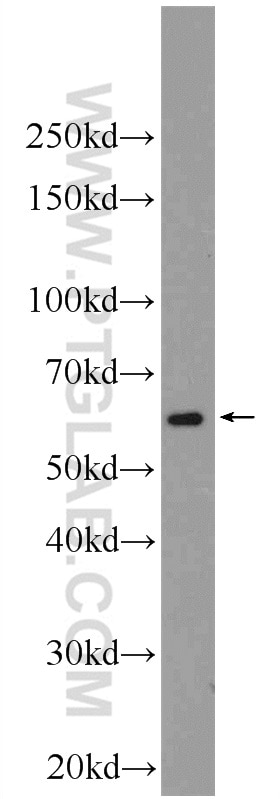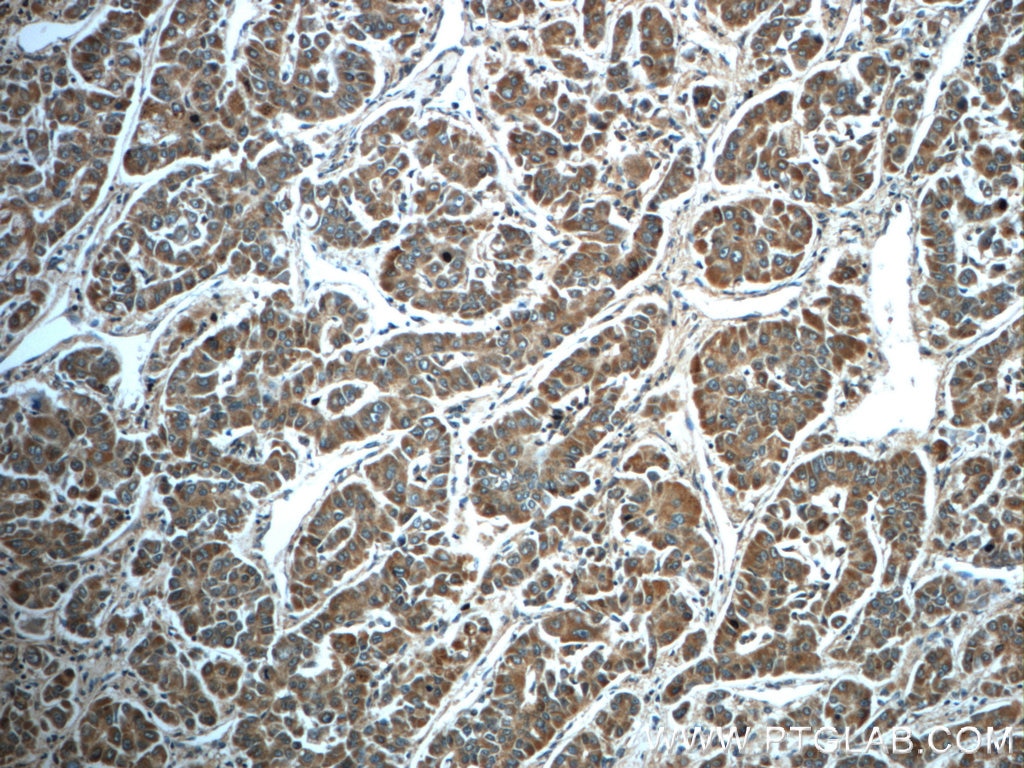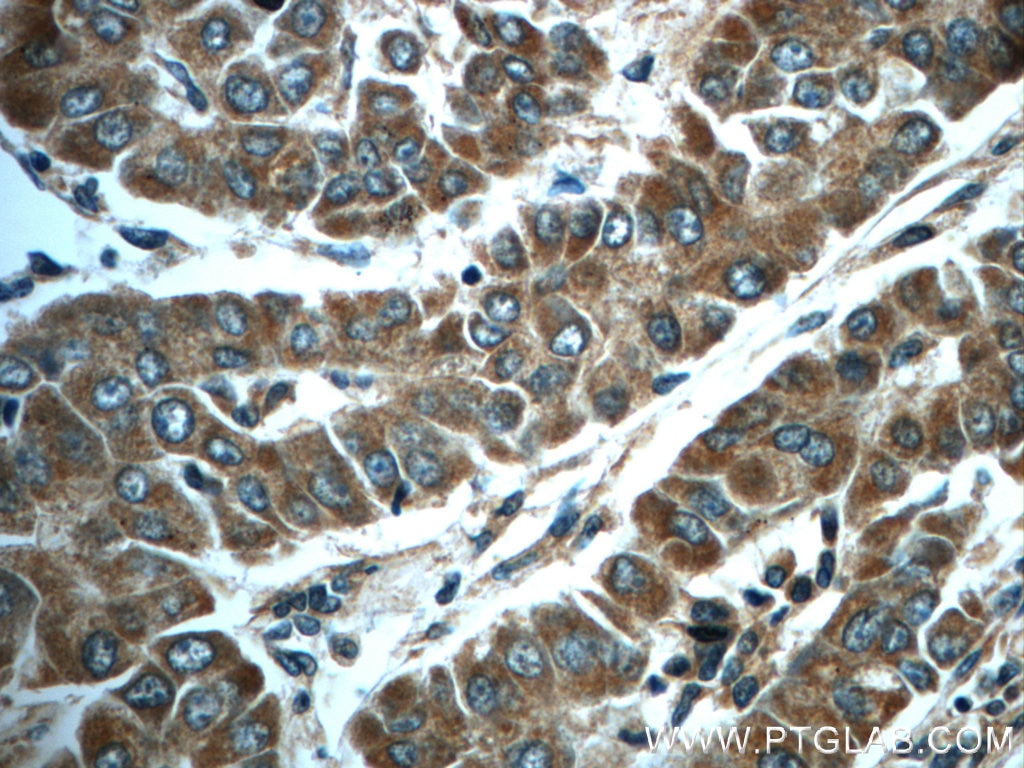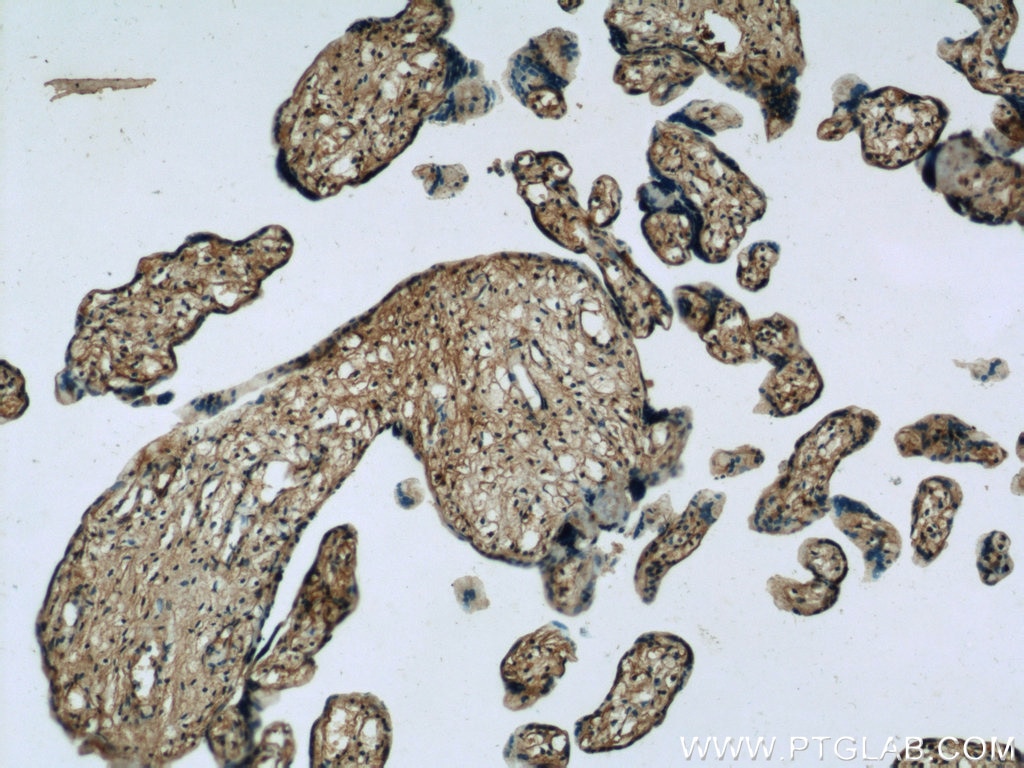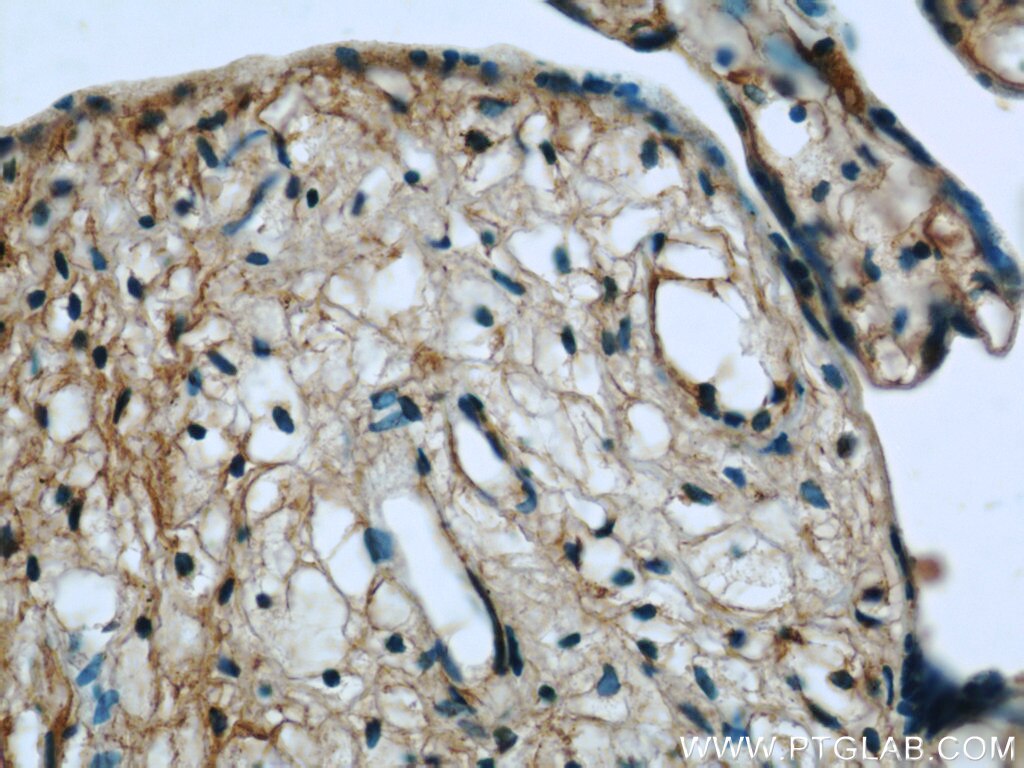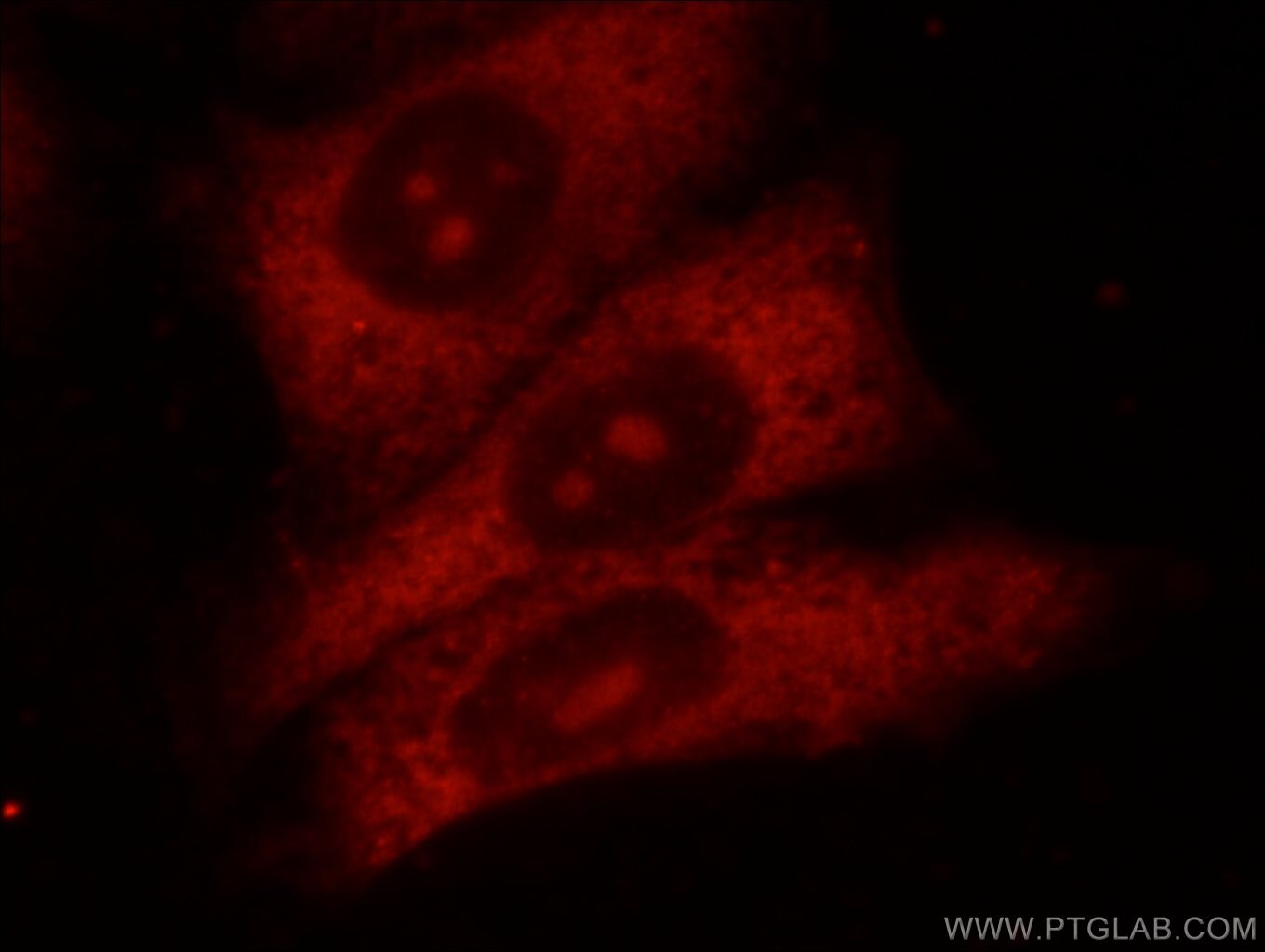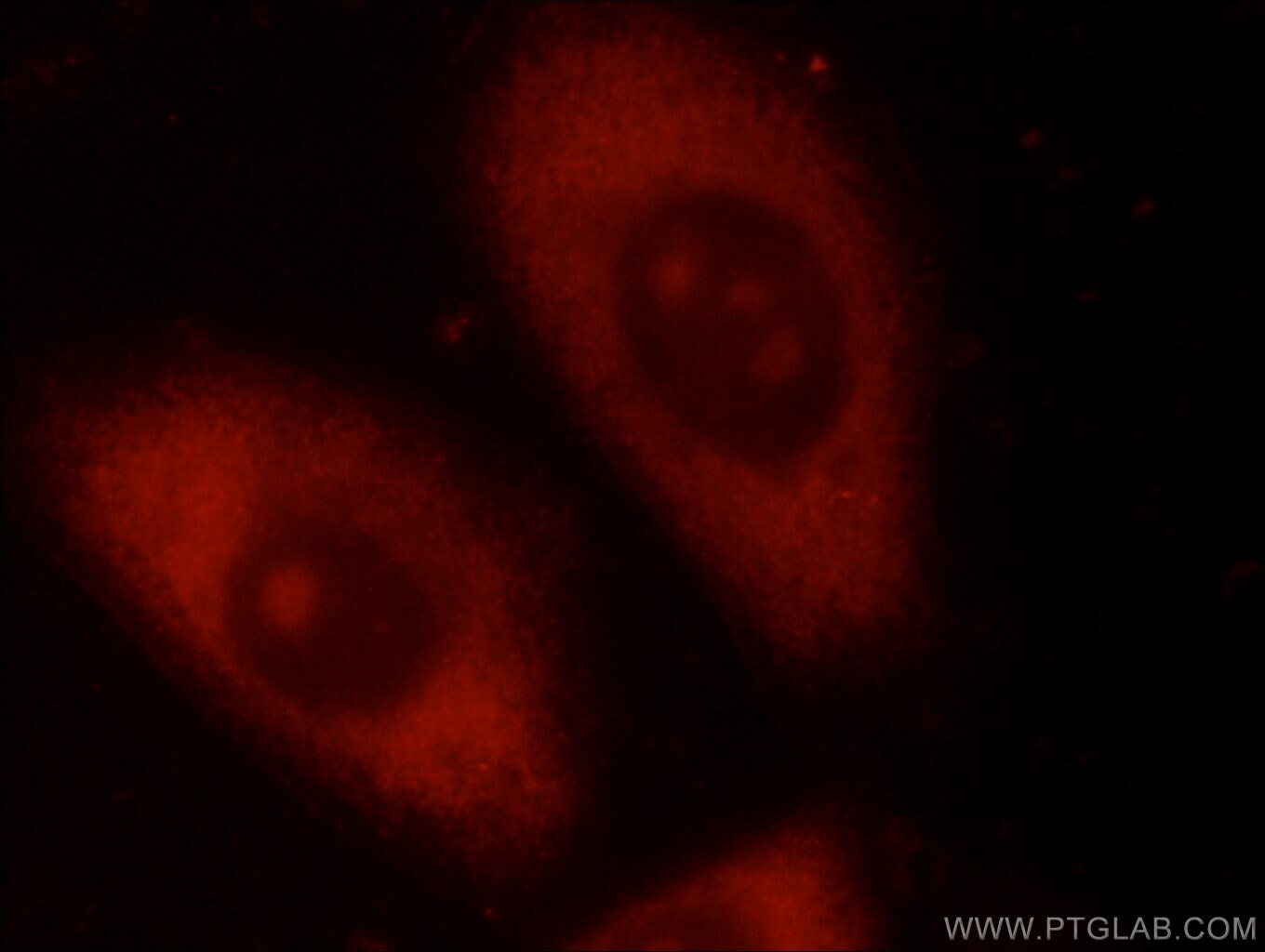HPSE Polyklonaler Antikörper
HPSE Polyklonal Antikörper für IF, IHC, WB, ELISA
Wirt / Isotyp
Kaninchen / IgG
Getestete Reaktivität
human, Maus und mehr (1)
Anwendung
WB, IHC, IF, ELISA
Konjugation
Unkonjugiert
Kat-Nr. : 24529-1-AP
Synonyme
Galerie der Validierungsdaten
Geprüfte Anwendungen
| Erfolgreiche Detektion in WB | Jurkat-Zellen |
| Erfolgreiche Detektion in IHC | humanes Leberkarzinomgewebe, humanes Plazenta-Gewebe Hinweis: Antigendemaskierung mit TE-Puffer pH 9,0 empfohlen. (*) Wahlweise kann die Antigendemaskierung auch mit Citratpuffer pH 6,0 erfolgen. |
| Erfolgreiche Detektion in IF | HeLa-Zellen, HepG2-Zellen |
Empfohlene Verdünnung
| Anwendung | Verdünnung |
|---|---|
| Western Blot (WB) | WB : 1:500-1:2000 |
| Immunhistochemie (IHC) | IHC : 1:20-1:200 |
| Immunfluoreszenz (IF) | IF : 1:10-1:100 |
| It is recommended that this reagent should be titrated in each testing system to obtain optimal results. | |
| Sample-dependent, check data in validation data gallery | |
Veröffentlichte Anwendungen
| WB | See 4 publications below |
| IHC | See 3 publications below |
Produktinformation
24529-1-AP bindet in WB, IHC, IF, ELISA HPSE und zeigt Reaktivität mit human, Maus
| Getestete Reaktivität | human, Maus |
| In Publikationen genannte Reaktivität | human, Maus, Ratte |
| Wirt / Isotyp | Kaninchen / IgG |
| Klonalität | Polyklonal |
| Typ | Antikörper |
| Immunogen | HPSE fusion protein Ag21479 |
| Vollständiger Name | heparanase |
| Berechnetes Molekulargewicht | 543 aa, 61 kDa |
| Beobachtetes Molekulargewicht | 60 kDa |
| GenBank-Zugangsnummer | BC051321 |
| Gene symbol | HPSE |
| Gene ID (NCBI) | 10855 |
| Konjugation | Unkonjugiert |
| Form | Liquid |
| Reinigungsmethode | Antigen-Affinitätsreinigung |
| Lagerungspuffer | PBS mit 0.02% Natriumazid und 50% Glycerin pH 7.3. |
| Lagerungsbedingungen | Bei -20°C lagern. Nach dem Versand ein Jahr lang stabil Aliquotieren ist bei -20oC Lagerung nicht notwendig. 20ul Größen enthalten 0,1% BSA. |
Hintergrundinformationen
HPSE(Heparanase) is also named as HEP, HPA, HPA1, HPR1, HPSE1, HSE1 and belongs to the glycosyl hydrolase 79 family. It is a endoglycosidase that cleaves heparan sulfate proteoglycans (HSPGs) into heparan sulfate side chains and core proteoglycans. HPSE is essential in the disassembly of the extracellular matrix (ECM) by invading cells. It has 3 isoforms produced by alternative splicing with the molecular weight of 61 kDa, 55 kDa and 53 kDa. The full length protein has six glycosylation sites. The cleavage of the 65 kDa form leads to the generation of a linker peptide, and 8 kDa and 50 kDa products. The active form, the 8/50 kDa heterodimer, is resistant to degradation and glycosylation of the 50 kDa subunit appears to be essential for its solubility.
Protokolle
| Produktspezifische Protokolle | |
|---|---|
| WB protocol for HPSE antibody 24529-1-AP | Protokoll herunterladen |
| IHC protocol for HPSE antibody 24529-1-AP | Protokoll herunterladen |
| IF protocol for HPSE antibody 24529-1-AP | Protokoll herunterladen |
| Standard-Protokolle | |
|---|---|
| Klicken Sie hier, um unsere Standardprotokolle anzuzeigen |
Publikationen
| Species | Application | Title |
|---|---|---|
J Control Release cRGD-targeted heparin nanoparticles for effective dual drug treatment of cisplatin-resistant ovarian cancer | ||
EMBO Rep CircHIPK3 sponges miR-558 to suppress heparanase expression in bladder cancer cells. | ||
Br J Cancer Shed Syndecan-1 is involved in chemotherapy resistance via the EGFR pathway in colorectal cancer. | ||
Neural Regen Res Reducing LncRNA-5657 expression inhibits the brain inflammatory reaction in septic rats. | ||
Diabetes Res Clin Pract Heparanase-driven inflammation from the AGEs-stimulated macrophages changes the functions of glomerular endothelial cells. | ||
Exp Ther Med MicroRNA-219a-2-3p modulates the proliferation of thyroid cancer cells via the HPSE/cyclin D1 pathway. |
Rezensionen
The reviews below have been submitted by verified Proteintech customers who received an incentive forproviding their feedback.
FH Fabio Henrique (Verified Customer) (01-17-2019) | Figure 1. IF of HPSE (red) and CD68 (green) in 3D coculture of C4-2B and primary human macrophages. C4-2B and primary human macrophages were encapsulated in a 3D hydrogel, composed of hyaluronic acid and collagen type 1, and cocultured for 5 days. On day 5, cells were fixed in 4% paraformaldehyde for 10 minutes, washed with PBSTritonX 0.3% for 3x 5min and blocked in PBS 10% Goat serum, 1% BSA, for 1 hr at RT. Anti-HPSE was used at 1:100 in blocking buffer, overnight incubation at 4*C. Secondary antibodies AlexaFluor 488 and 568 were used at 1:500 for 1 hr at RT. Imaged using a Nikon A1 confocal microscope. Figure 2: HPSE (red) and CD68 (green) in Grade 3 Endometrial cancer tissue (Frozen). Staining was performed as described above, except secondary antibodies were used at 1:1000. This antibody did not perform well in WB (data not shown).
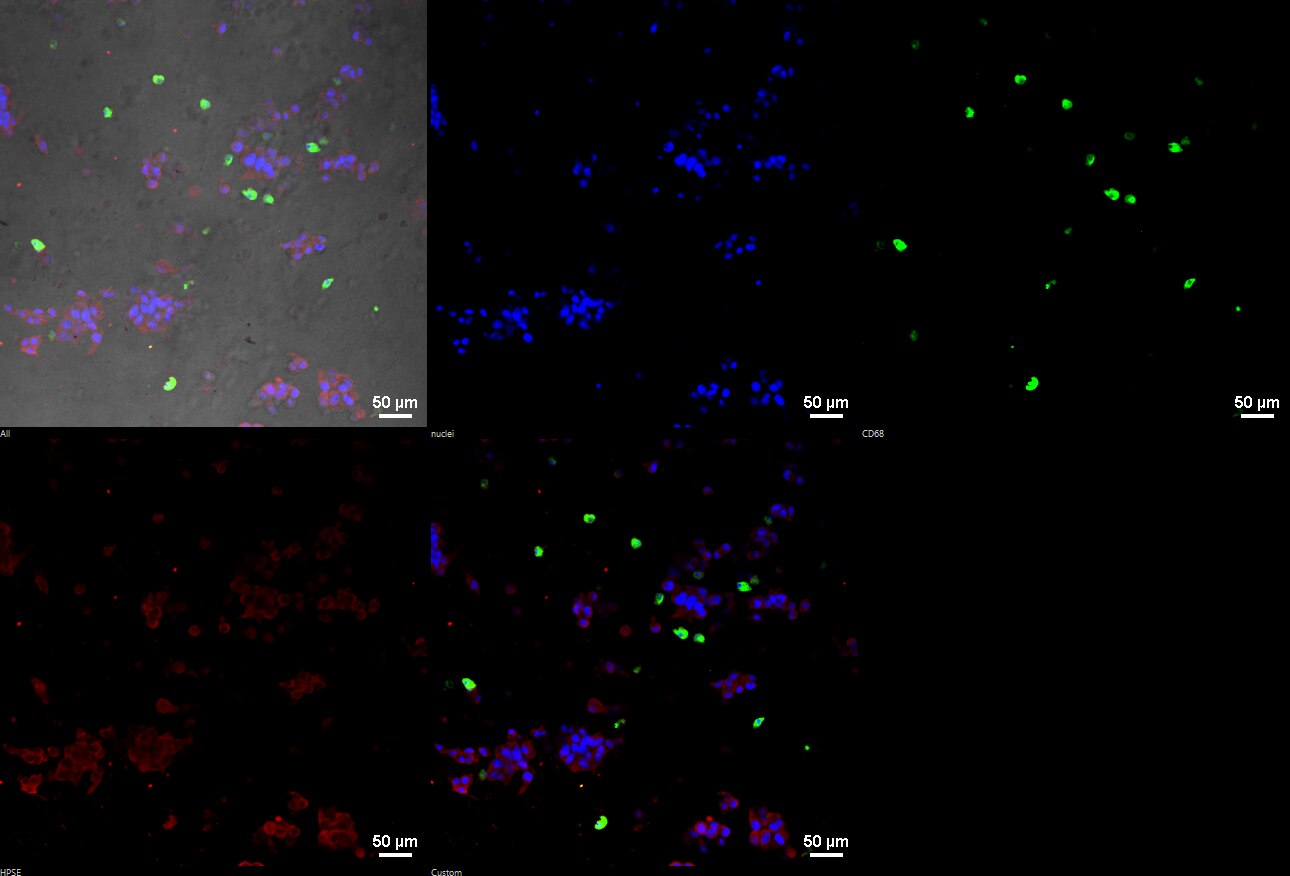 |
